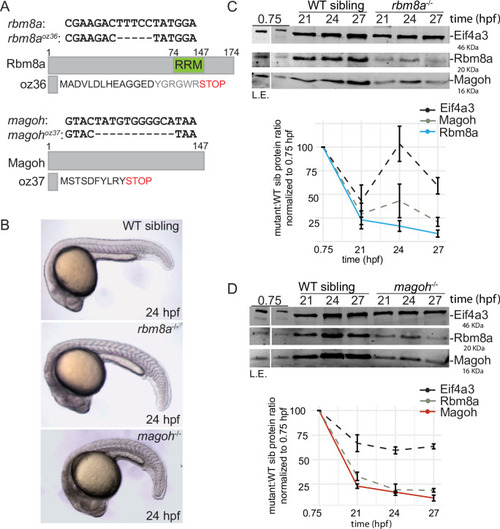|
Zebrafish <italic>rbm8a</italic> and <italic>magoh</italic> mutant embryos show gradual loss of maternally contributed Rbm8a and Magoh proteins during early development.A. Schematic illustrating the rbm8aoz36 and magohoz37 alleles and the predicted proteins they encode. Full-length Rbm8a and Magoh proteins are also shown. RRM: RNA Recognition Motif. B. Whole mount images of live wild-type sibling, rbm8a mutant, and magoh mutant embryos at 24 hpf. Increased grayness in the head region of homozygous rbm8a and magoh mutant embryos indicates cell death. C. Top: Western blots showing EJC protein expression in wild type (WT) sibling and rbm8a-/- mutant embryos. Antigens detected are listed on the right and embryo genotype is listed above the blot. Developmental time points (hpf) are indicated above each lane. Protein from five (0.75 hpf) or ten embryos (all other time points) was loaded in each lane. A longer exposure (L.E.) of the 0.75 hpf lane is on the left. Bottom: Line graphs showing the amount of protein (per embryo) in the mutant embryos compared to wild-type sibling as a percent of protein present at 0.75 hpf. Error bars represent standard error of means. D. Top: Western blots as in C showing EJC protein expression in wild type (WT) sibling and magoh-/- mutant embryos. Bottom: Line graphs showing protein quantification as in C.
|

